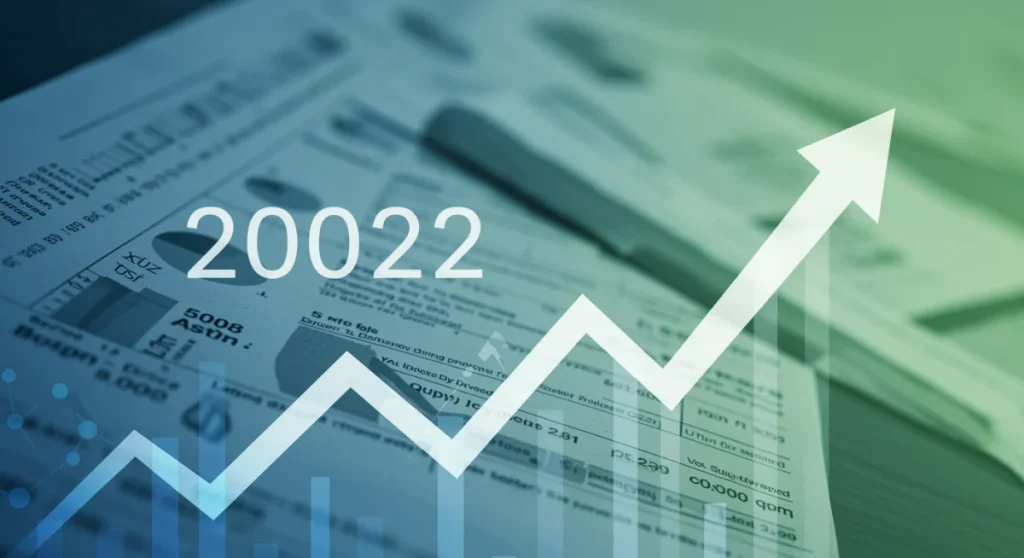2025 Tax Code Changes: 5 Key Updates for US Investors

The 2025 tax code changes are poised to significantly impact US investors, necessitating a thorough understanding of key updates to optimize investment strategies and ensure compliance.
For US investors, navigating the 2025 tax code changes is not merely an annual exercise but a critical component of strategic financial planning. Understanding these impending shifts is essential to mitigate potential liabilities and capitalize on new opportunities.
Understanding the Looming Sunset of TCJA Provisions
The Tax Cuts and Jobs Act (TCJA) of 2017 brought about significant changes to the US tax landscape, many of which are set to expire at the end of 2025. This sunset provision means that without new legislative action, numerous individual tax provisions will revert to pre-TCJA law. For investors, this looming deadline creates both uncertainty and an urgent need for proactive planning.
The potential return to higher individual income tax rates, changes to estate tax exemptions, and modifications to itemized deductions could dramatically alter the net returns on investments. It is crucial for investors to assess how these expirations might affect their taxable income, capital gains, and overall financial health.
Individual Income Tax Rate Adjustments
One of the most immediate impacts for many investors will be the potential adjustment of individual income tax rates. The lower rates introduced by the TCJA are scheduled to expire, meaning higher marginal rates could apply to investment income.
- Higher marginal tax rates for various income brackets.
- Potential impact on ordinary income from dividends and interest.
- Reassessment of tax-efficient investment vehicles.
This shift necessitates a review of income-generating assets and strategies, potentially favoring tax-advantaged accounts or investments with deferred tax implications. Understanding your current and projected income brackets will be paramount.
Estate Tax Exemption Reversion
The TCJA significantly increased the federal estate tax exemption. In 2025, this exemption is scheduled to revert to approximately half its current level, adjusted for inflation. This change has profound implications for high-net-worth individuals and their estate planning strategies.
For those with substantial assets, the reduced exemption could subject a larger portion of their estate to federal estate taxes. This makes revisiting wills, trusts, and gifting strategies imperative to minimize future tax burdens for beneficiaries.
In conclusion, the sunset of TCJA provisions is not a distant concern but an immediate call to action for investors. Proactive engagement with financial advisors to model potential scenarios and adjust strategies is essential to navigate these significant changes effectively.
Capital Gains and Qualified Dividends: What to Expect
The tax treatment of capital gains and qualified dividends is a cornerstone of investment planning. With the scheduled expiration of TCJA provisions, these rates are also subject to significant changes, directly affecting how investors realize profits from their portfolios.
Currently, long-term capital gains and qualified dividends are taxed at preferential rates, often lower than ordinary income tax rates. The impending reversion could mean an increase in these rates, particularly for higher-income individuals. This potential shift demands a careful evaluation of when to realize gains and how to structure investment disposals.
Potential Rate Increases for Long-Term Gains
The preferential rates for long-term capital gains (assets held for over a year) are tied to individual income tax brackets. If ordinary income tax rates increase, the long-term capital gains rates for certain brackets are also expected to rise.
- Impact on selling appreciated assets.
- Importance of tax-loss harvesting strategies.
- Consideration of charitable giving with appreciated assets.
Investors should consult with their tax professionals to understand how these potential rate increases might specifically affect their portfolios and develop strategies to optimize their tax liabilities.
Qualified Dividend Income Considerations
Similar to long-term capital gains, qualified dividends currently benefit from preferential tax treatment. A change in the underlying ordinary income tax rates could lead to higher taxes on dividend income, making dividend-paying stocks less tax-efficient for some investors.
Understanding the distinction between qualified and non-qualified dividends, and how each might be taxed under the new regime, will be crucial. This could influence decisions regarding portfolio composition, potentially favoring growth stocks over income-generating ones, or vice versa, depending on individual circumstances and risk tolerance.
Ultimately, the changes to capital gains and qualified dividends underscore the need for investors to be agile and responsive. Reviewing your investment timeline, potential exit strategies, and dividend income sources is vital to prepare for these anticipated tax adjustments.
Impact on Retirement Accounts and Savings Incentives
Retirement savings are a fundamental aspect of long-term financial security for many US investors. The 2025 tax code changes are expected to bring modifications that could influence contribution limits, withdrawal rules, and the overall tax efficiency of popular retirement vehicles like 401(k)s and IRAs.
While the TCJA did not dramatically alter retirement account rules, the broader tax landscape changes could indirectly affect their appeal or strategic use. For instance, if individual income tax rates rise, the tax deduction for traditional IRA and 401(k) contributions becomes more valuable, while Roth conversions might become less attractive in the short term, depending on future tax rate expectations.
Contribution Limits and Catch-Up Provisions
While direct changes to contribution limits for 401(k)s and IRAs are often adjusted annually for inflation, the overall tax environment can influence how investors utilize these limits. Higher income tax rates could incentivize maximizing pre-tax contributions to reduce current taxable income.
For older investors, catch-up contributions become even more critical. Understanding the rules for these additional contributions and how they integrate into a broader tax strategy will be key to maximizing retirement savings before potential rate increases take effect.
- Reviewing current contribution levels for 401(k)s and IRAs.
- Evaluating the benefits of traditional vs. Roth contributions.
- Considering catch-up contributions for those aged 50 and over.
These considerations are not merely about saving more, but saving smarter, ensuring that each dollar contributed provides the maximum tax benefit given the evolving tax code.
Tax Implications of Roth Conversions
Roth conversions, where pre-tax retirement funds are converted to a Roth account, involve paying taxes on the converted amount in the year of conversion. With potentially higher future tax rates, a Roth conversion might seem more appealing now to lock in current, possibly lower, tax rates.
However, the decision to convert is complex and depends on an individual’s current income, projected future income, and overall financial goals. A careful analysis of the tax burden in the year of conversion versus the long-term tax-free growth and withdrawals from a Roth account is essential.
In summary, investors must re-evaluate their retirement savings strategies in light of the 2025 tax changes. Consulting with a financial advisor can help tailor a plan that optimizes contributions, manages withdrawals, and makes informed decisions about Roth conversions to secure a comfortable retirement.

Business Income and Pass-Through Entities: Investor Implications
For investors who hold interests in pass-through entities such as S corporations, partnerships, and sole proprietorships, the 2025 tax changes could significantly impact their business income and overall tax liability. The TCJA introduced the qualified business income (QBI) deduction under Section 199A, a provision that allowed eligible pass-through entities to deduct up to 20% of their qualified business income.
This deduction is also scheduled to expire at the end of 2025. The potential loss of this significant tax benefit means that many business owners and investors in these entities could see a substantial increase in their taxable income, affecting their personal tax returns directly.
Expiration of the Section 199A QBI Deduction
The 20% QBI deduction has been a major tax break for many small business owners and investors in pass-through entities. Its expiration could lead to a considerable increase in the effective tax rate on business income. This change necessitates a close examination of business structures and income distribution strategies.
Business owners should consider the implications of this expiration on their net profits and cash flow. Strategies such as accelerating income into 2025 or deferring expenses might be explored, though careful planning is required to avoid triggering other tax issues.
- Increased tax burden on pass-through business income.
- Review of business entity structures.
- Potential adjustments to owner compensation and distributions.
The loss of the QBI deduction underscores the importance of re-evaluating the tax efficiency of current business operations and investment holdings within pass-through entities.
Planning for Increased Tax Liability
Without the QBI deduction, investors in pass-through entities will likely face higher personal income tax liabilities from their business earnings. This requires proactive planning, including adjusting estimated tax payments and exploring other tax-mitigation strategies.
Consideration should be given to whether modifying the business structure, such as converting from an S corporation to a C corporation, could offer tax advantages under the new rules. However, such decisions involve complex trade-offs and should be made in consultation with tax and legal professionals.
In conclusion, the expiration of the QBI deduction is a critical update for investors involved in pass-through entities. Strategic planning, including a review of business structure and income management, is essential to minimize the impact of these changes and maintain financial stability.
The Future of Itemized Deductions and Credits
The TCJA significantly altered the landscape of itemized deductions, raising the standard deduction and limiting several popular itemized deductions. As many of these provisions are set to expire in 2025, investors need to prepare for potential changes to their ability to reduce taxable income through itemized deductions and various tax credits.
The reversion to pre-TCJA rules could mean a lower standard deduction, making itemizing deductions more attractive for a broader range of taxpayers. Simultaneously, certain limitations on itemized deductions, such as the state and local tax (SALT) deduction cap, may also be subject to change, affecting investors in high-tax states.
Reversion of Standard Deduction Amounts
The standard deduction was nearly doubled under the TCJA. If it reverts to its pre-TCJA levels, more taxpayers might find it advantageous to itemize deductions. This shift could impact how individuals plan for expenses such as mortgage interest, medical costs, and charitable contributions.
- Lower standard deduction leading to more itemizers.
- Increased importance of tracking deductible expenses.
- Potential for higher taxable income for those who previously took the standard deduction.
Investors should begin tracking all potential itemized deductions meticulously to be prepared for this potential change. This includes property taxes, state income taxes, and significant medical expenses.
Changes to SALT Deduction Cap and Other Limitations
The TCJA introduced a $10,000 cap on the deduction for state and local taxes (SALT), which disproportionately affected taxpayers in high-tax states. While there is ongoing debate, the expiration of TCJA could remove or modify this cap, providing significant relief to affected investors.
Beyond SALT, other itemized deduction limitations could also change. For example, the deduction for miscellaneous itemized deductions (e.g., unreimbursed employee expenses, investment expenses) was temporarily suspended under TCJA. A reversion could bring these deductions back, offering new avenues for tax reduction.
In summary, the future of itemized deductions and credits remains a critical area of uncertainty for investors. Staying informed about legislative developments and actively managing deductible expenses will be key to optimizing tax outcomes in 2025 and beyond.
Strategic Planning and Proactive Measures for Investors
Given the multifaceted nature of the 2025 tax code changes investors face, a proactive and strategic approach is indispensable. Waiting until the last minute to address these shifts can lead to missed opportunities and unnecessary tax burdens. Effective planning involves not only understanding the potential changes but also implementing strategies to adapt your financial portfolio and personal finances accordingly.
This includes reviewing your current investment holdings, assessing your risk tolerance, and re-evaluating your long-term financial goals in light of the evolving tax landscape. The goal is to optimize your after-tax returns and ensure your financial plan remains robust and resilient.
Engaging with Financial and Tax Professionals
One of the most critical steps for investors is to engage early and often with qualified financial advisors and tax professionals. These experts can provide personalized guidance, help model different tax scenarios, and identify strategies tailored to your specific financial situation.
A comprehensive review of your portfolio, income sources, and deduction opportunities with a professional can uncover potential vulnerabilities and highlight areas for optimization. They can assist in making informed decisions regarding asset allocation, tax-loss harvesting, and retirement planning.
- Schedule a comprehensive review with your financial advisor.
- Discuss potential tax implications on your investment portfolio.
- Explore strategies for tax-efficient asset location.
Their expertise is invaluable in navigating the complexities of tax law and ensuring compliance while maximizing your financial well-being.
Reviewing Investment Strategies and Portfolio Adjustments
The impending tax changes may necessitate adjustments to your investment strategy. For instance, if capital gains rates are expected to rise, you might consider realizing some gains in 2025. Conversely, if ordinary income rates are projected to decrease in the future, deferring income might be beneficial.
Consider the tax efficiency of your investment vehicles. Utilizing tax-advantaged accounts like 401(k)s, IRAs, and HSAs can become even more important. Additionally, exploring municipal bonds for tax-exempt interest or considering real estate investments with their unique depreciation benefits could be prudent.
In conclusion, strategic planning is not a one-time event but an ongoing process. By staying informed, seeking professional advice, and proactively adjusting your investment strategies, you can effectively navigate the 2025 tax code changes and position yourself for continued financial success.
| Key Update | Investor Impact |
|---|---|
| TCJA Sunset | Higher individual income tax rates and changes to estate tax exemptions possible. |
| Capital Gains & Dividends | Potential increase in long-term capital gains and qualified dividend tax rates. |
| QBI Deduction Expiration | Elimination of the 20% qualified business income deduction for pass-through entities. |
| Itemized Deductions | Possible lower standard deduction and changes to SALT cap and other limitations. |
Frequently Asked Questions
The main driver is the scheduled expiration of many provisions from the Tax Cuts and Jobs Act (TCJA) of 2017. Without new legislation, these individual income tax provisions will revert to pre-TCJA law, impacting rates and deductions for investors.
Higher income tax rates could reduce your after-tax returns. Investors might consider increasing contributions to tax-advantaged accounts, focusing on tax-efficient investments, or adjusting their timeline for realizing capital gains and income.
A Roth conversion before 2025 could be beneficial if you anticipate being in a higher tax bracket in the future. Paying taxes now at potentially lower rates allows for tax-free withdrawals in retirement. This decision depends on your individual financial projections.
The Qualified Business Income (QBI) deduction allowed a 20% deduction for income from pass-through entities. Its expiration means investors in S-corps, partnerships, and sole proprietorships may see a significant increase in their personal tax liability on business income.
The best preparation involves consulting with a qualified financial advisor and tax professional. They can help you review your portfolio, understand specific impacts, and develop a personalized strategy to mitigate risks and optimize your financial position for 2025.
Conclusion
The impending 2025 tax code changes represent a critical juncture for US investors, demanding careful attention and proactive planning. From the sunset of TCJA provisions affecting individual income and estate taxes to potential shifts in capital gains, qualified dividends, and the QBI deduction, the landscape is evolving. By understanding these key updates and engaging with financial and tax professionals, investors can strategically adjust their portfolios, optimize their tax liabilities, and ensure their financial plans remain aligned with their long-term objectives. Remaining informed and adaptable will be paramount to navigating these changes successfully and safeguarding your financial future.





